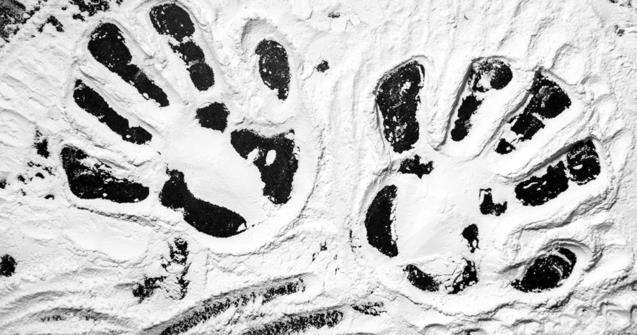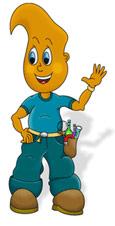
Globule wonders...
How can we catch an ice cube in water using only a piece of string?

Experiment: The magic of salt
Hypotheses: Spark children's interest with a magic trick. Ask them how they could catch an ice cube which is floating in water without using their fingers. The only tool they have is a piece
of string. Let them come up with several possible solutions they can try.
Material:
- A glass of cold water per child
- A piece of string per child (approx. 15cm long)
- An ice cube per child
- Magic powder
(which is really salt, but do not tell children at first, they can try to identify it later)
Manipulations:
- Your daycare worker will give you a glass of water and a piece of string. Place them in front of you.
- When everyone is ready, your daycare worker will deposit an ice cube in your glass.
- Using ONLY the string, try to catch your ice cube and take it out of the glass. CAREFUL ! You mustn't touch the ice cube with your fingers. **If children spend a great deal of time attempting to catch their ice cube, be sure to have other ice cubes on hand.
- Difficult isn't it? Now, your daycare worker will give you magic powder.
- Deposit one end of your string on the ice cube and hold the other end in your hand. Sprinkle a small quantity of magic powder on the ice cube.
- Stay still for 15-20 seconds then pull on your string. The ice cube clings to the string like magic
Explanation: Ask children, "What do you think happened? What do you think the magic powder was?" Let children think about it and state their ideas. When they are done, tell them it was just table salt.
Salt has special properties. These properties make ice melt. This is why we put salt in our driveways and on roads in winter. Salt is very useful. It prevents many injuries related to slipping on ice and considerably reduces the number of car accidents.
In your experiment you used only a pinch of salt. It was not enough to melt the entire ice cube. However, it was sufficient to melt a tiny portion of it which was enough for the string to penetrate the ice. The temperature of the water cooled the portion of the ice cube which had melted upon contact with the salt. The ice cube hardened once again, trapping the string inside.
Angélique Boissonneault
has a Bachelor's Degree in Biological Science. She has worked in a laboratory and tested her knowledge. She has taught Math, Chemistry, and Physics. She has also developed a simplistic and innovative approach designed to introduce young children to scientific experiments, old and new. She created her friend Globule. This character is sometimes red, and sometimes white. He guides little ones through their scientific experiments and discoveries. It is clear to see Angélique is passionate about children and science. Globule's Approach.

 Home
Home Theme activities
Theme activities
 Babies and toddlers
Babies and toddlers
 Arts and crafts
Arts and crafts
 Science
Science
 Creative recipes
Creative recipes
 Tips and tricks
Tips and tricks
 Special needs
Special needs
 Extra activities
Extra activities
 Educ-TV
Educ-TV
 Newsletter
Newsletter  Online store
Online store Educatall club
Educatall club

